ABOUT THE PRINTS
To purchase an archival print, email NormMagnusson@aol.com. All prints are hand signed and are inscribed with the title of the piece, e.g.: "fig. 1: leaf of the clown tree." Archival computer prints are available from 15" x 10" up to 60" x 40" image size. They look good in all sizes but even better bigger.
Each giclée is individually created in a partnership with my master printer, Steve Kerner of Stone River Fine Arts in Woodstock, N.Y. An artist himself, Mr. Kerner has dedicated the last 15 years to collaborating with visual artists to create the finest quality archival prints.
(For more details, click the link above.)
THE FIRST 200
The "Decorating Nature" series. My little "interventions with nature". I did the very first one of them while on vacation in India 13 years ago; I couldn't find any watercolor paper so I painted on leaves. Most all of them are watercolor on leaf or bark or stone or what have you. In a few of them, I used acrylic paint. Enjoy the scrolling!
fig. 201: a textbook example of seasonal Catalpa pox
fig. 200: leaf of the zelkova chameleon tree
fig. 199: caeruleum blight on black walnut tree leaf.
fig. 198: the Dartboard Tree is identifiable by its colorful leaf
fig. 197: some pollinator plants continue their garish displays
even after they've stopped blooming
fig. 196: leaf of the Roygbiv tree in autumn.
fig. 194: strange leaf blown in on Hurricane Ida
fig. 193: purple dahlia with creeping blue "taffy rot".
fig. 192: leaf inundated with colorful "tonsil fungus"
fig. 188: bark of the invasive zebra birch, introduced to the New World in 1789.
fig. 186: Sycamore Anthracnose is an alluring but dangerous fungus.
fig. 183: tulip tree leaf with advanced blue-tosis.
fig. 182: Oak leaves often try to horn in on spring's colorful display.
fig. 180: While it looks beautiful, Milkweed's cold weather pink hue
is actually a sign of cellular damage.
fig. 179: Chinese lanterns with Christmasitis infestation.
fig. 178: Rose of Sharon at Christmas time.
fig. 177: unidentified leaf overcome by colorful fungus.
fig. 176: some leaves just can't wait for autumn.
fig. 175: the female Japanese Zelcova leaf is never outdone by the male.
fig. 174: spring brings the strangest things.
fig. 173: leaf spot is a common affliction of mountain laurel.
fig. 172: leaf of the Round Eye tree.
fig. 171: you never know what's on the other side of any given leaf.
fig. 170: clovers of a feather flock together.
fig. 169: vernal leaf litter and a linden pod with Spot's syndrome.
fig. 168: evening sun lights up a leaf of the marching spectrum tree.
fig. 167: a warm winter day reveals a ravaged liriodendron leaf.
fig. 166: a Magnolia x soulangeana leaf lets its soul shine at twilight.
fig. 165: the colorful s. niccolls fungus is quite formidable.
fig. 164: tell tale marks of the so-called "privilege fungus" mar an otherwise fine specimen.
fig. 163: leaves of the "brighter horizons" tree stand out amidst autumnal decay
fig. 162: weakening Catalpa leaves are susceptible to adamantem fungus
fig. 161: a bipolar Virginia Creeper. Fun but dangerous.
fig. 160: a colorful attempt to hide the ravages of age.
fig. 159: late summer leaf decay

fig. 158: a parasitic jaune leaf attached to a walnut stem
fig. 157: spring hopes sometimes fall to winter's late ravages
fig. 156: winter's ravages rot to black some but not all hydrangea petals
fig. 155: seed pods of the Peacock Maple in early spring.
fig. 154: wind blown kismet/leaf with K. Haringitis
fig. 153: maple leaf with winter-onset B. Riley-itis.
fig. 152: beneath the blanket of fresh snow, two heart leaves commingle.
fig. 151: frequently, the most beautiful hearts are also the most complicated.
fig. 150: as temperatures plunge, the reds gather together for warmth and support.
fig. 149: peak foliage
fig. 148: web rot overtakes a large oak leaf.
fig. 147: catalpa almost inundated by indigo fungus.
fig. 146: autumnal color chaos.
fig. 145: sassafras leaves are especially susceptible to teal.
fig. 143: example of yin/yang in nature are quite common but very hard to find.
fig. 139: Nature adores symmetry.
fig. 136: "dandelion" come from the French "dent de lion" meaning "tooth of the lion." Just after Easter each year, blood spontaneously appears on this invasive weed.
fig. 135: each spring, the lowly, lovely daffodil overshadows the previous autumn's colorful detritus.
(A special section devoted to the 'suite' prints, which have been requested by many collectors.)
fig. 134a: (clockwise from top left) winter, spring, fall, and summer
fig. 134b: Cape Cod's Ridgevale beach is home to many colorful specimens.
fig. 134c: a few of the many faces of the Tulip tree leaf.
fig. 134d: pixellation is found throughout nature.
fig. 134e: stripetococcus infestation can strike the leaves of any tree.
fig. 133: the first frost affects different leaves differently.
fig. 132: as the days grow shorter and the nights longer,
cones from the Tulip tree huddle together for warmth and protection.
cones from the Tulip tree huddle together for warmth and protection.
fig. 131: often, a plain surface belies a festive underbelly.
fig. 130: the so-called "magic" mushrooms are usually easy to spot.
fig. 128: shorter days and cooler nights can act almost like poison to some leaves, coursing through their veins and hastening their inevitable demise.
fig. 127: late summer/early fall.
fig. 126: the eastern cottonwood is much more
"Pennsylvania Dutch" than its western cousin.
fig. 125: certain leaves fight against aging, others embrace it wholly.
fig. 124: the Japanese Zelkova is susceptible to a blight of geometric precision.
fig. 123: in east facing gardens, clover leaves will become more ornamental.
fig. 122: certain mushrooms are only found under the leaves of the Cobalt Tree.
fig. 121: down near the playground, a yellow poplar, or 'tuliptree' drops its magnificent fruit.
fig. 120: the vernal equinox has some amazing effects on the plant kingdom.
fig. 119: As the snow melts in spring, forgotten gems appear.
fig. 118: Frequently, the last leaf to fall is the most colorful.
fig. 117: A sea of red fungus spreads over this green leaf.
fig. 114: Unidentified leaf preparing for the gray months ahead.
fig. 112: Rare leaf on leaf interaction caught on camera.
fig. 110: Black walnuts hide their poison behind bright decorations.
fig. 109: A branch of the rainbow tree in early spring.
fig. 108: One can never truly know what's on the inside of another walnut.
fig. 107: After the holidays are over, poinsettias find fresh ways to stay festive.
fig. 106: Some leaves revel in their imperfections, filling in cracks with gold.
fig. 105: Leaves of the Anglerfish tree resemble the teeth of the eponymous fish.
fig. 104: Black walnut leaves are more colorful than those of their cousin, the English walnut.
fig. 103: occasionally, leaves fall all the way from the sky.
fig. 102: in parts of Cape Cod, polka dots are de rigeur.
fig. 101: skate egg case with O'Connor's zebratitis.
fig. 100: brassica mel mellis produces a sweet nectar on the edges of its leaves.
fig. 99: a fresh bloom of the "exploding rainbow" flower.

fig. 97: a leaf begins the process of blending into its background.
fig. 96: dead limbs never blink.
fig. 95: some oak leaves self-censor.
fig. 94: a Spanish influence can be seen in some leaves' autumnal markings.
fig. 93: leaves of the japanese maple have been used as hypnosis aides for millenia.

fig. 92: certain mosses secrete a pheromone that reacts beautifully with maple leaves
fig. 91: certain mosses secrete a pheromone that reacts beautifully with maple leaves
fig. 90: it's said that if you arrange the leaves of the bluepoint tree in a circle, you will attract true love.

fig. 89: lower branch of the rouge tree

fig. 88: snake leaves are one of nature's many ways of predicting a long, hard winter.
fig. 86: an evergreen's pine cone with fall foliage envy
fig. 85: flowers of the rose of sharon tree are natural show-offs.
fig. 84: stripes syndrome as seen on dead Mountain Laurel leaves
fig. 83: Queen Anne's lace with daisy envy.
fig. 82: dying leaves of house plants still retain a strong memory of their past glory
fig. 81: spectrumcirculitis on a London plane tree outside Paris' Faculté de Médecin.
fig. 80: one of the more tastefully turned out trees of Paris' boulevard Saint-Germain
fig. 79: occasionally, a tree will wear its grain on the outside.
fig. 78: some sections of bark succumb to garishitis, not too common on Paris' plane trees.
fig. 77: some trees highlight their fertility right on their trunks.
fig. 76: écailles des poisson syndrome on platanus x acerifolia
fig. 75: white stripes visit Paris.
fig. 74: A Paris plane tree sports the latest fashion.
fig. 73: a maple key with cartoonitus.
fig. 72: white-dot fungi fill every surface of a tree stump.

fig. 71: the tequila sunrise tree drops very happy leaves.

fig. 70: a locust seed pod adopts a snake pattern, probably to discourage attack by seed eating birds.
fig. 69: old-timers claim that counting the rings on peach leaves in fall predicts how many peaches you'll get next season.
fig. 67: the winged burning bush marks its leaves for exfoliation.
fig. 65: peak foliage is not always found on the trees.
fig. 64: blue bursts portend a long winter.
fig. 63: the rare "Sunset scallop" is purported to cure narcolepsy if put under the pillow of the afflicted.
fig. 61: On Fire Island, the Pines drop some very colorful cones.
fig. 58: yellow remembers orange.
fig. 55: certain leaves pay tribute to fallen friends with tattoos.
(individual leaves from this small series can be seen by clicking here.)
fig. 52: it's not unusual for leaves to overcompensate for their inherent blandness.
fig. 51: rare and valuable seed pods of the money plant, lunaria annua.
fig. 42: in late- to mid-winter, some leaves can be found in Florida sporting unnaturally bright colors.
fig. 41: the male of the autograph tree forms garish yellow patterns on its leaves in an attempt to attract a mate.
fig. 40: an old wives' tale says that 6 painted hearts will keep the frost away.
fig. 29: often, nature's designs even outshine man's
fig. 25: a 17 year old river rock.
fig. 24: the lodgepole pine, pinus contorta, is especially vulnerable to attack by leopard print disease, spread by contact with wild cougars.
fig. 20: local children must climb high into the plaid tree to harvest its young leaves, traditionally worn at vernal equinox celebrations.
fig. 18: like the aurora borealis, orange pine needle stripes only appear under very specific conditions.
fig. 17: on cold days, xylem and phloem turn blue
fig. 15: mountain laurel with peacock syndrome.
fig. 14: hairy rocks hide behind a twig.
fig. 8: metamorphic rock undergoing underwater metamophosis
fig 1: leaf of the clown tree
The giclées are printed with ultra chrome K3 pigments on a variety of materials:
• Archival rag matte - 100% post-industrial waste cotton
• Matte canvas - 100% cotton canvas for those who prefer the look of canvas.
• 505 gram, 100% rag, clay coated archival paper imported from England
• Matte canvas - 100% cotton canvas for those who prefer the look of canvas.
• 505 gram, 100% rag, clay coated archival paper imported from England
Prices are the same for each material:
15" x 10" $300
18" x 12" $400
24" x 16" $600
30" x 20" $800
36" x 24" $1000
60" x 40" $2000
About giclées:
| The Definition : Giclee (zhee-klay) - The French word "giclée" is a feminine noun that means a spray or a spurt of liquid. The word may have been derived from the French verb "gicler" meaning "to squirt". The Term : The term "giclee print" connotes an elevation in printmaking technology. Images are generated from high resolution digital scans and printed with archival quality inks onto various substrates including canvas, fine art, and photo-base paper. The giclee printing process provides better color accuracy than other means of reproduction. The Process : Giclee prints are created typically using professional 8-Color to 12-Color ink-jet printers. Among the manufacturers of these printers are vanguards such as Epson, MacDermid Colorspan, & Hewlett-Packard. These modern technology printers are capable of producing incredibly detailed prints for both the fine art and photographic markets. Giclee prints are sometimes mistakenly referred to as Iris prints, which are 4-Color ink-jet prints from a printer pioneered in the late 1970s by Iris Graphics. | The Advantages : Giclee prints are advantageous to artists who do not find it feasible to mass produce their work, but want to reproduce their art as needed, or on-demand. Once an image is digitally archived, additional reproductions can be made with minimal effort and reasonable cost. The prohibitive up-front cost of mass production for an edition is eliminated. Archived files will not deteriorate in quality as negatives and film inherently do. Another tremendous advantage of giclee printing is that digital images can be reproduced to almost any size and onto various media, giving the artist the ability to customize prints for a specific client. The Quality : The quality of the giclee print rivals traditional silver-halide and gelatin printing processes and is commonly found in museums, art galleries, and photographic galleries. The Market : Numerous examples of giclee prints can be found in New York City at the Metropolitan Museum, the Museum of Modern Art, and the Chelsea Galleries. Recent auctions of giclee prints have fetched $10,800 for Annie Leibovitz, $9,600 for Chuck Close, and $22,800 for Wolfgang Tillmans (April 23/24 2004, Photographs, New York, Phillips de Pury & Company.) ©1997-2010 Giclée Print Net |












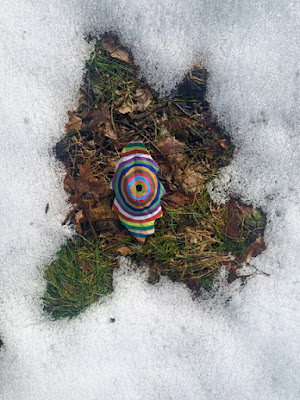











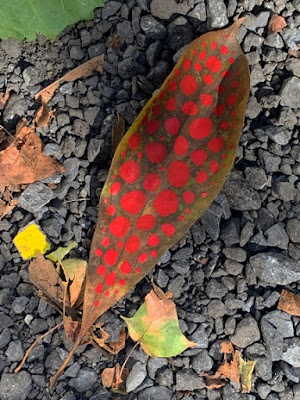














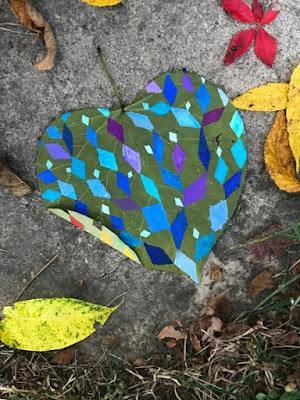









































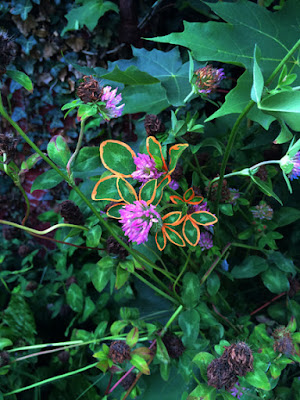































































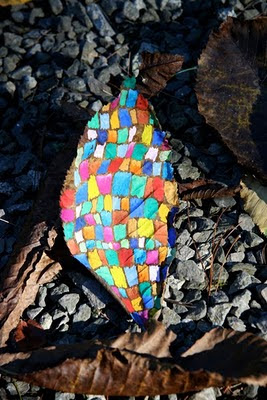

























































1 comment:
Thanks for sharing such a nice post.
Post a Comment